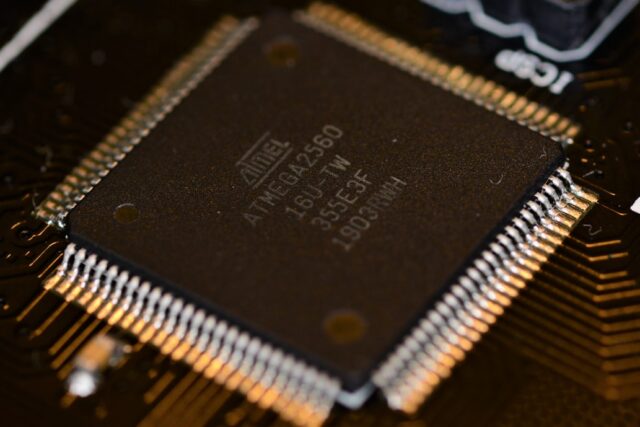E-SIM technology, or embedded SIM technology, represents a significant evolution in the way mobile devices connect to cellular networks. Unlike traditional SIM cards, which are physical cards that can be inserted and removed from devices, E-SIMs are embedded directly into the device’s motherboard. This integration allows for a more streamlined design, as manufacturers can eliminate the SIM card slot, leading to thinner and more compact devices.
The E-SIM is programmable, meaning that users can switch carriers or plans without needing to physically replace a SIM card. This flexibility is particularly advantageous in an increasingly globalized world where travelers often seek to change their mobile service providers based on location. The technology operates on the same principles as traditional SIM cards, utilizing the same protocols for authentication and encryption.
However, E-SIMs offer enhanced capabilities, such as the ability to store multiple profiles simultaneously. This means that a single device can hold several different carrier profiles, allowing users to switch between them as needed. The transition to E-SIM technology is being driven by various factors, including the demand for more compact devices, the rise of IoT (Internet of Things) applications, and the need for greater flexibility in mobile connectivity.
As more manufacturers adopt this technology, it is poised to reshape the landscape of mobile communications.
Advantages of E-SIM only phones
One of the most significant advantages of E-SIM only phones is their enhanced convenience. Users no longer need to worry about carrying around physical SIM cards or dealing with the hassle of inserting and ejecting them when switching carriers or plans. This ease of use is particularly beneficial for frequent travelers who may need to change their mobile service provider based on their location.
With an E-SIM, they can simply download a new carrier profile directly onto their device without needing to visit a store or wait for a new SIM card to arrive by mail. Additionally, E-SIM technology allows for a more seamless user experience when it comes to managing mobile plans. Users can easily switch between different data plans or carriers through their device settings, often with just a few taps on the screen.
This flexibility can lead to cost savings, as users can take advantage of competitive pricing from various carriers without being locked into long-term contracts. Furthermore, the ability to store multiple profiles means that users can maintain separate plans for personal and business use on a single device, streamlining their mobile management.
Potential drawbacks of E-SIM only phones

Despite the numerous advantages of E-SIM only phones, there are potential drawbacks that consumers should consider. One significant concern is the lack of physical control over the SIM card. For many users, having a physical SIM card provides a sense of security and control; they can easily remove it if they sell their device or if it is lost or stolen.
With an E-SIM, this process becomes more complicated, as users must navigate through software settings to deactivate or transfer their profiles. This could lead to challenges in situations where immediate access to a physical SIM card would be beneficial. Another drawback is the potential for compatibility issues with older devices and networks.
While most modern smartphones are being designed with E-SIM capabilities, many existing devices still rely on traditional SIM cards. This could create a divide in the market where users with older devices may feel left out or pressured to upgrade sooner than they would prefer. Additionally, not all carriers support E-SIM technology yet, which could limit options for consumers in certain regions or countries.
This lack of universal adoption may hinder the overall growth of E-SIM technology and its acceptance among consumers.
Impact on mobile carriers and network providers
| Metrics | Impact |
|---|---|
| Increased data usage | Higher demand for data plans and network capacity |
| Network congestion | Strain on network infrastructure leading to slower speeds |
| Need for network expansion | Investment in infrastructure to meet growing demand |
| Revenue from data services | Potential for increased revenue from data packages and services |
| Customer satisfaction | Impact on customer experience due to network performance |
The rise of E-SIM technology is poised to have a profound impact on mobile carriers and network providers. One of the most notable changes is the potential for increased competition among carriers. With E-SIMs enabling users to switch providers with ease, carriers will need to offer more attractive pricing and service options to retain customers.
This could lead to a more dynamic market where consumers benefit from better deals and improved service quality as companies strive to differentiate themselves. Moreover, E-SIM technology may encourage carriers to innovate in terms of service offerings. For instance, they might develop more flexible data plans that cater specifically to the needs of consumers who frequently travel or use multiple devices.
Additionally, network providers may invest in enhancing their infrastructure to support seamless transitions between different carrier profiles, ensuring that users experience minimal disruption when switching services. As competition intensifies and innovation accelerates, the overall landscape of mobile telecommunications could undergo significant transformation.
Consumer adoption and market trends
Consumer adoption of E-SIM only phones is gradually gaining momentum as awareness of the technology increases and more devices enter the market. Major smartphone manufacturers have begun incorporating E-SIM capabilities into their flagship models, signaling a shift in consumer preferences towards more versatile and user-friendly devices. As consumers become more accustomed to digital solutions in various aspects of their lives, the appeal of E-SIM technology is likely to grow.
Market trends indicate that younger generations, who are typically more tech-savvy and open to adopting new technologies, are leading the charge in embracing E-SIMs. These consumers value convenience and flexibility in their mobile services, making them prime candidates for E-SIM only phones. Additionally, as remote work becomes more prevalent and international travel resumes post-pandemic, the demand for flexible mobile connectivity solutions will likely continue to rise.
This trend suggests that E-SIM technology will play an increasingly important role in shaping consumer behavior and preferences in the coming years.
Security and privacy concerns

While E-SIM technology offers numerous benefits, it also raises important security and privacy concerns that must be addressed. One major issue is the potential vulnerability of digital profiles compared to physical SIM cards. If a device is compromised or hacked, an attacker could potentially gain access to multiple carrier profiles stored on an E-SIM, leading to unauthorized usage or data breaches.
This risk underscores the importance of robust security measures at both the device and network levels. Moreover, the process of switching carriers through an E-SIM can introduce additional security challenges. Users must ensure that they are downloading profiles from legitimate sources and that their devices are protected against phishing attacks or malware that could exploit vulnerabilities during this process.
As E-SIM technology becomes more widespread, it will be crucial for manufacturers and network providers to implement stringent security protocols and educate consumers about best practices for safeguarding their information.
Regulatory challenges and industry standards
The adoption of E-SIM technology also faces regulatory challenges that could impact its growth and implementation across different regions. Various countries have different regulations regarding telecommunications and data privacy, which can complicate the standardization of E-SIM technology globally. For instance, some regions may require specific authentication processes or data protection measures that differ from those in other areas, creating inconsistencies in how E-SIMs are managed and utilized.
Additionally, establishing industry standards for E-SIM technology is essential for ensuring interoperability among devices and networks. Without standardized protocols, consumers may encounter difficulties when attempting to switch carriers or use their devices across different networks. Collaborative efforts among manufacturers, carriers, and regulatory bodies will be necessary to create a cohesive framework that supports the widespread adoption of E-SIM technology while addressing regional differences in regulations.
The future outlook for E-SIM only phones
Looking ahead, the future outlook for E-SIM only phones appears promising as technological advancements continue to drive innovation in mobile communications. As more manufacturers embrace this technology and integrate it into their devices, consumers will likely see an increasing number of options available in the market. The convenience and flexibility offered by E-SIMs align well with evolving consumer expectations for seamless connectivity and user-friendly experiences.
Furthermore, as IoT devices proliferate and demand for connected solutions grows, E-SIM technology will play a crucial role in enabling efficient communication across various platforms. The ability to manage multiple profiles on a single device will be particularly advantageous in an era where smart devices are becoming ubiquitous in everyday life. As industries adapt to these changes and consumers embrace new technologies, E-SIMs are set to become a standard feature in mobile communications, paving the way for a more interconnected future.
FAQs
What is an E-SIM?
An E-SIM, or embedded SIM, is a small chip embedded in a mobile device that serves the same purpose as a traditional SIM card. It allows users to connect to a cellular network and access mobile services.
What are E-SIM only phones?
E-SIM only phones are mobile devices that do not have a physical SIM card slot and rely solely on E-SIM technology for cellular connectivity.
What are the potential benefits of E-SIM only phones?
E-SIM only phones offer the potential for greater flexibility and convenience for users, as they can easily switch between different mobile carriers and plans without needing to physically swap out SIM cards.
Are E-SIM only phones widely available?
E-SIM only phones are still relatively new to the market and may not be as widely available as traditional SIM card phones. However, the technology is gaining traction and more manufacturers are beginning to offer E-SIM only options.
What are the potential drawbacks of E-SIM only phones?
One potential drawback of E-SIM only phones is that they may not be compatible with all mobile carriers, as not all carriers support E-SIM technology. Additionally, users may face challenges in transferring their E-SIM profile to a new device if their current device is lost or damaged.
Is the future of mobile connectivity leaning towards E-SIM only phones?
The future of mobile connectivity may indeed be moving towards E-SIM only phones, as the technology offers benefits in terms of flexibility and convenience. However, the widespread adoption of E-SIM only phones will depend on factors such as carrier support and consumer demand.



MOST COMMENTED
Apps
10 Hidden Android Apps: Boost Productivity Instantly
Apps
Privacy-Focused Messaging Apps: A 2025 Comparison
Apps
Top Minimalist Apps for a Distraction-Free Life
Apps
Top Offline Apps for 2025: No Internet Needed
Gadget
The Battle of Wearables: Smart Rings vs. Smartwatches
Gadget
The Future of Mental Health: Wearable Gadgets on the Rise
Laptops
Top Laptops for Coding and Content Creation Under ₹70,000